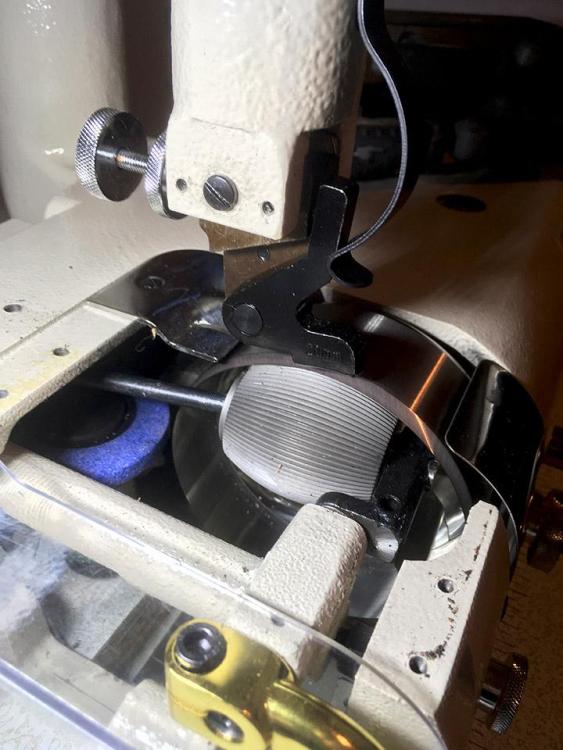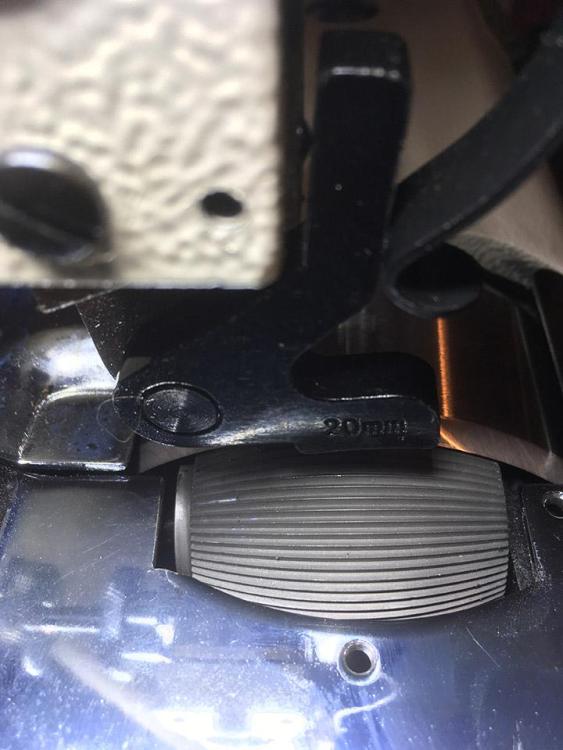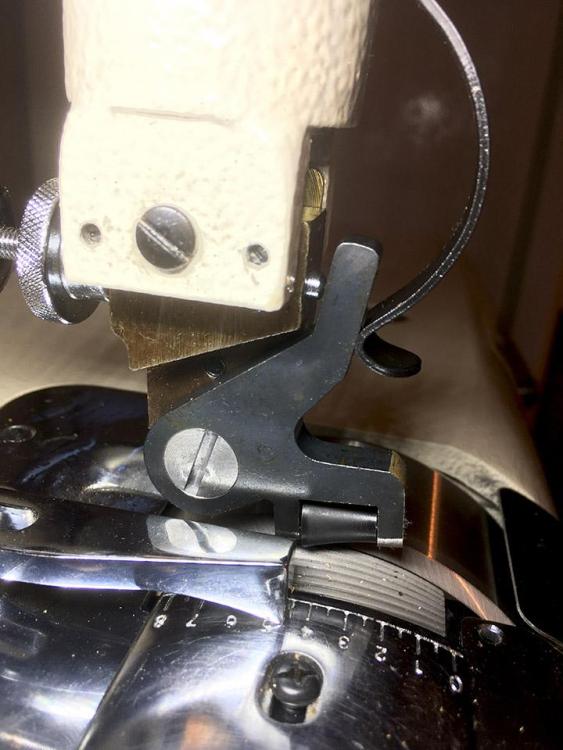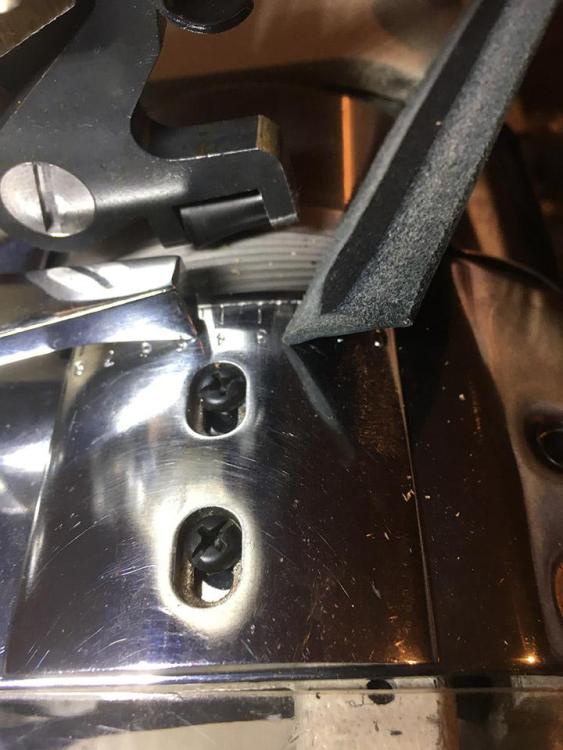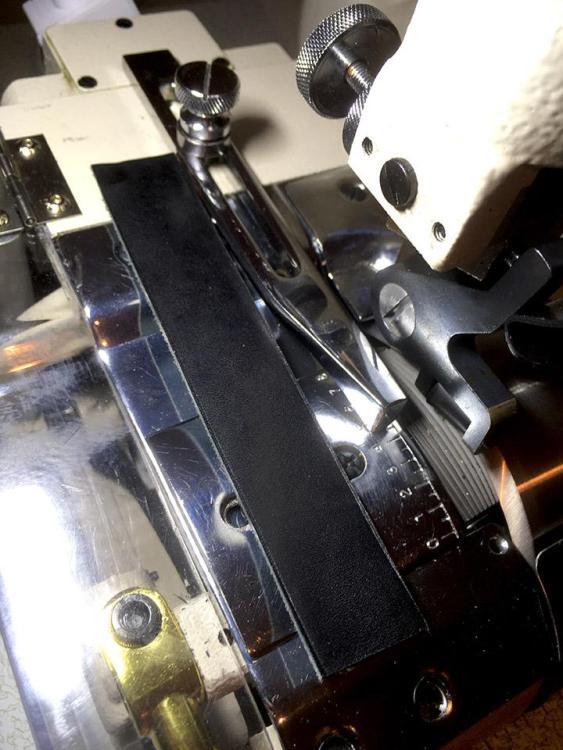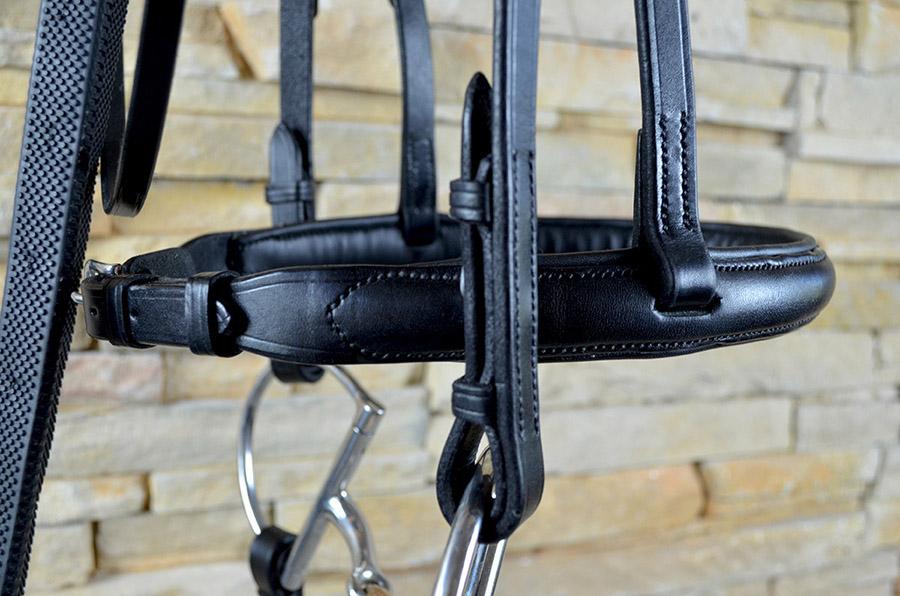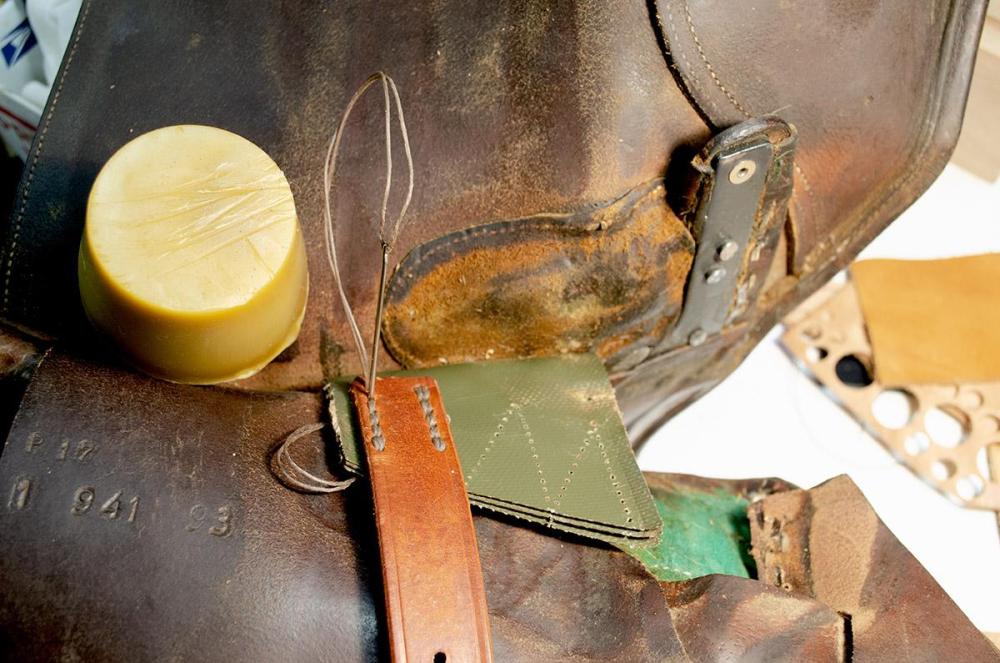-
Posts
1,282 -
Joined
-
Last visited
Content Type
Profiles
Forums
Events
Blogs
Gallery
Everything posted by TomE
-
Lots of pretty details and impressive craftsmanship. I like it.
-
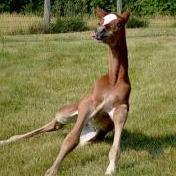
Allergies in dogs and their going off food.
TomE replied to SUP's topic in All About Us and Off Topic
She is a lovely dog! We had an alleged Border Collie, Bess, who we thought might have some Kelpie blood. She developed autoimmune polyarthritis at 3 years old and by age 6 years succumbed to long term immunosuppression with steroids to control the arthritis. She was a wonderful farm dog while the arthritis was under control. Now I have a 10 YO Border Collie that is completely blind and a 2 YO Border Collie that we recently adopted. They keep me entertained while doing chores. The blind dog knows his way around the farm, more or less, but is becoming forgetful. Guess you know what my favorite breed is. Bess doing her circus act with a weanling foal. -

Replacing strap keepers on a Swiss Rucksack
TomE replied to livewire516's topic in How Do I Do That?
I use the single needle backstitch for attaching new girth straps to the canvas webs of an English saddle. The idea is that the double length stitches on the canvas side gather more threads per stitch and are more secure than a saddle stitch. The front of the sitch looks like a normal running stitch. The back side is a bit loopy. I think either the saddle stitch or the backstitch would be fine for your project. Here is a video showing the backstitch for creating a running loop (sliding keeper). -

Replacing strap keepers on a Swiss Rucksack
TomE replied to livewire516's topic in How Do I Do That?
Another idea is to sew the keeper on a leather shield (any decorative shape) then sew the shield to the bag. A single needle backstitch is a good choice for sewing leather to woven fabric. The double length stitches on the back side gather more threads in each stitch. This is one time when I pre-punch holes in the leather and use a harness needle to pierce the fabric. An awl will cut threads in the weave. -
This is a used Tech Sew that I am quite happy with. Setting up a bell skiver for anything but thin/soft leather seems to be a well kept secret, but I am having fun learning by trial and error. Took @RockyAussie's advice and avoided the top-and-bottom feed machine, which would probably outsmart me. I will also use it for thin leather - bags, covers for halter pads, etc.
-
The friend who gave me the cake of wax clarified a few things today. She uses 1 part pine rosen (not pine tar) plus 2 parts beeswax. She heats the rosen in a nonstick pan just until melted then adds the beeswax to melt. She pours the mixture into silicon baking molds to harden. So far I don't see any rosen crystals in the wax. She purchased Pine Gum Rosen on Etsy from DiamondGForest. Also, "triple filtered beewax" from SimplyBeeswaxCandle on Etsy.
-
As an alternative to hand skiving the edges of straps to create swells for bridles, I wanted to see if my bottom feed bell skiver could do it to save time (10 sec versus 30 min) and produce a consistent thickness. Think I am closing in on a solution. I am using 9-10 oz bridle leather and thinning the edges to about 3 oz thickness. This is a fairly steep taper on leather that is thicker than typical for a bell skiver. First thing was to improve the feed of thick leather through the machine. I purchased a slotted steel roller drum (FAV 856) from Campbell-Randall. It is heavy and has roller bearings inside instead of a bushing. This is the "knobby tire" for my "off roading" experiment. Grips the leather firmly and doesn't clog with fuzzy bits like an emery roller drum. For thick leather I also decrease the roller drum spring tension. Had to notch out the guard plate to accommodate the flange on the left side of this roller. Next thing was to get a roller foot that would decrease resistance to feeding thick leather and minimize marking of the grain of veg tanned leathers. This roller foot (FAV 362-BC) is tapered to produce a tapered skive. It has a nifty eccentric cam in the mounting pin that gives an additional adjustment for the angle of the skive. The short length of the roller and the cam adjustment allow for a very steep angle (by bell skiver standards). I am still dialing in the setup for this job, but here is some 9-10 oz bridle leather skived to ~3 oz on the edges. This was skived in a single pass on each side. The decreased spring tension allows the roller drum to flex so the knife can take a bite out of the leather while the aggressive grip of the slotted steel keeps the feed constant. The roller doesn't leave a mark on the grain, which is of course important for these decorative bridle pieces. Here is what a finished noseband with a swell looks like. Two skived straps are shaped in a rounding block and sewn together. This noseband has a padded liner. Once I work out the machine skiving methods, the next task will be machine sewing these swells instead of hand sewing. The problem with machine sewing is the continuous taper causes the presser feet to slip along the sloped edge. Going to try angling the strap while sewing with a holster plate. Your critiques and suggestions are welcome!
-
Nothing wrong with firm leather for making tack. I associate firm temper with quality tannage. The back and butt are the firmest/strongest parts of the hide and preferable for making strap goods like belts and tack. I put a light coating of Fiebings pure neatsfoot oil on the grain side after the project is finished, let it soak in for several hours to overnight, then condition the leather to add a bit of water resistance and luster. Oiling will make the leather a bit more supple and it will break in with use. Too much oil (saturating the leather) can ruin the leather, making it sticky and soft. My favorite conditioners for tack are Fiebings Aussie, Blackrock Leather N' Rich, and Bickmores Bick 4. A quality halter is stiff when new, and the leather is tightly wrapped around the hardware to reduce rubbing and wear. My 2 cents.
-
If you look at the saddle and tack accessory items forum you will find examples including my halter methods file. HO bridle leather is firm, which I prefer for cutting and sewing. I oil and condition it at the end of the project. No need to add a liner to the pasted back of bridle leather. If you want to add padding I can give you some pointers.
-
To avoid making slanted cuts I tip the handle towards the flat side of the blade so the chisel slices straight down through the leather. Is that what you do, @chuck123wapati?
-
Correcting my comment above: The wax I'm using is made from 1 part pine resin/rosin (not pine tar) and 2 parts beeswax. She poured the molten mixture into a silicon baking mold to cool. Similar to the recipes others have mentioned in this thread.
-
Great information. Here's a DIY video for making coad. I've got to try this!
-
Thank you! I will check them out. Does either book cover the currying process for making bridle and harness leathers?
- 7 replies
-
- vegetabletanned
- vegtan leather
-
(and 4 more)
Tagged with:
-
She said pine tar, but I'll confirm that. The Bickmore product is pine tar. Thanks. Will check this out.
-
A friend gave me a cake of 50:50 beeswax and pine tar, and it works really well for waxing thread. Slightly more tacky than pure beeswax to improve grip on the needles and slightly softer so it is easy to spread/burnish into the thread. She thinks it lasts longer than plain beeswax to preserve linen thread. Here I am using heavy polyester thread to replace the billets on a jumping saddle. I begin and end each stitch line by passing the needle with doubled up thread through a hole 3 times (single needle backstitch) and the thread is nicely lubricated. My new favorite wax. To address some of the concerns raised in this thread: The beeswax/pine tar mixture is only slightly darker than pure beeswax. It is not at all messy to work with and easier to get a thin even coating on the thread than the pure beeswax I have used. I found Bickmore's pine tar at my local feed store with the leather care products (it is also used as an antimicrobial for treating hoof wounds and infections) so I will be making a batch of my own. I think she molded the wax in a muffin tin.
-
Beiler's Manufacturing and Supply has spot and rivet setters with semi-automatic feed. I have no experience with these machines. Call them for a catalog. Orders placed by phone or USPS.
-
Welcome! I am always interested in reading about the chemistry of tanning and currying leather. Any books that you can recommend or articles that can be shared? Particularly interested bridle and harness leather.
- 7 replies
-
- vegetabletanned
- vegtan leather
-
(and 4 more)
Tagged with:
-
Not sure about this item but I have an old Tandy Pro modeled after an Osborne #84. I use it frequently for lap skives on the ends of straps including buckle turrns. It is difficult to split items wider than about 2-3" on one of these, and consistent splits longer than ~1 ft require practice. Thin leather pulled through the splitter will stretch. My tips are to keep the blade really sharp, pull the leather with a slightly downward angle, and keep a finger on the leather entering the blade to prevent it from lifting up (and cutting through the grain) at the end of a strap. I eventually learned to split 2-3 ft long straps to a desired thickness provided the temper of the leather was consistent throughout. Now I use a motorized, push through splitter for big jobs and use the manual splitter for lap skives.
-
Will message you with my email address. Thanks so much.
-
This is very helpful. Thank you. First I've seen it recommended to angle the feed roller for a tapered skive. Also, varying the distance between the foot and the bell according to the thickness of the leather. Any chance you could provide the complete manual? I have ordered a couple of FAV roller feet from Campbell-Randall that use the eccentric pin mentioned here. Would like to read how FAV recommends using this adjustment.
-

Is the veg tan tooling leather sold at "ST Leather" any good?
TomE replied to jasonsmith's topic in How Do I Do That?
I have been to the ST-Leather shop/warehouse in Saint Louis a handful of times. It is a warehouse crammed full of an entertaining mix of tools, supplies, and leather. Some name brand items (CS Osborne, Fiebings, Hermann Oak) and other generic low quality stuff. I view it as a bargain hunter's outlet. I have purchased several sides of HO veg tan that were fine, but I picked them out in person. Their imported leather looked on par with what I see at Tandy. The leather is kept in a large room that is not climate controlled - humid in summer, cold in the winter. I did buy some bonded nylon thread a few years ago that came apart and frayed in my machine - perhaps the bonding agent deteriorated with age. They refunded my money for the unused spools. Most everything else I've purchased (in person) from ST-Leather has met my expectations. Not high end, but serviceable stuff. Nonetheless, I make the 3 hour drive to Springfield Leather to purchase most of my leather because they have a larger inventory of HO leather to look at. -
Steel or brass staples can be used for running loops on tack or harness. Beiler's and Weaver sell them. Google "slide loop staples."
-
My advice would be to gain experience using your new machine for heavier leathers before buying additional plates to extend the range to lighter weight projects. You'll have a better feel for what you want/need with respect to thread size and leather thickness. You can do a lot of good work with the stock accessories. I have 2 machines and still do a lot of hand sewing because for some projects it's easier than setting up on a machine, and I like the look of a saddle stitch for certain projects.
-
@RockyAussie and @Patrick1 sell narrow feed dogs and plates for the 441 type machines. Patrick also has narrow foot sets for sewing close to edges and raised features. You can message them here or contact through their websites, Wild Harry and Hennigan Precision Engineering, respectively. These accessories are handy for extending the range of the 441 to lighter weight leathers. The narrow dog/plate from Brian (RockyAussie) is my every day set up for sewing tack. It feels more stable to me than the stock plate. The even narrower plates and feet from Patrick are great for sewing next to raised leather features and they do a nice job climbing over increasing thickness, for example the turn at the end of a strap that wraps around hardware. I prefer using #207 thread or smaller with the dog/plate set up that I purchased from Patrick - he has several widths - to have good clearance around the needle. I don't have experience sewing canvas on a 441. That would be a reason to purchase some #138 thread.
-
Beautiful work as always. Looking forward to seeing the case come together. I'm thinking bridges of Madison county...



